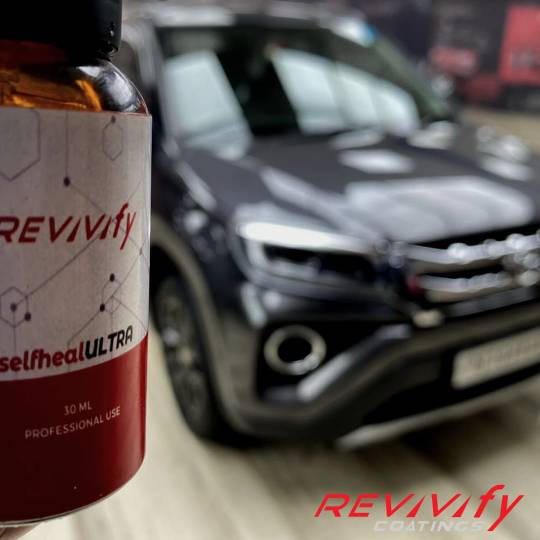#engineering ceramics
Text
Shaping the Future: Insights into the Isostatic Pressing Market
The global isostatic pressing market is projected to be USD 13,568.1 million by 2030 growing at a CAGR of 7.0% during the forecast period. sectors including energy, aerospace, medical devices, automotive, and manufacturing regularly use isostatic pressing. In this regard, the requirement for such technology is significantly impacted by the growing requirement for contemporary materials and…

View On WordPress
#advanced forming technology#advanced materials#aerospace industry#automotive components#ceramic components#engineering ceramics#high-pressure manufacturing#industrial manufacturing#industry trends#isostatic pressing#isostatic pressing applications#isostatic pressing process#manufacturing efficiency#market growth#material compaction#metal parts production#powdered metals#precision engineering
0 notes
Text



a ceramics project I completed last month. our assignment was to create shoe sculptures, and we were allowed to get wild with it, so i decided to design a G-Mod/Source Engine error themed one. the checker print was meant to be a vivid magenta, but it became more of a dark grape when it was fired in the kiln.
#ceramics#ceramic art#sculpture#source engine#gmod#g mod#half life#half life 2#missing texture#counter strike#portal#portal 2#tf2#team fortress 2#left 4 dead#left 4 dead 2#l4d#l4d2#csgo#counter strike global offensive
2K notes
·
View notes
Text




Some concept art pieces I've made for the Halloween grind
#tf2#team fortress 2#tf2 workshop#engineer#steam workshop#spy#heavy#medic#scout#soldier#pyro#illuminati#secret society#elite#secret#conspiracy#robes#hood#mask#ceramic#call of duty#zombies#black ops#dempsy#richtofen#takeo#nikolai#hat#military#scarf
53 notes
·
View notes
Text
How has my week been? Well, on Wednesday I had the most disappointing critique of my life with my professor, on Thursday my dog died, on Friday a piece I’ve been working on for months broke in the kiln, and today the people who did my oil change fucked it up and my engine in my car is blown up :)
#mott txt#doing really great y’all#only want to kill myself totally a lot#I haven’t talked abt the dog here bc I am so fucking upset about it it hurts too much#the ceramics things were just incredibly disappointing. the dog thing is killing me inside#the engine blowing up in my car is making me want to jump out of a fucking window#my car is only two years old :) it has 30000 miles on it :) and it is. blown up. :)
18 notes
·
View notes
Text
Unveiling the Legacy: 2023 Unworn Rolex GMT-Master II Pepsi 40mm

Step into the realm of timeless elegance and precision with the 2023 unworn Rolex GMT-Master II Pepsi 40mm. This exquisite timepiece represents the pinnacle of Swiss craftsmanship and innovation, offering a seamless blend of heritage and modernity.
Introduction:
Introducing the 2023 unworn Rolex GMT-Master II Pepsi 40mm – a premium timepiece that transcends the boundaries of style and functionality. Crafted with meticulous attention to detail and precision, this iconic watch pays homage to Rolex's rich heritage while embracing contemporary design and technology.
Legacy of Timeless Travel:
The GMT-Master II Pepsi 40mm continues the legacy of Rolex's iconic GMT-Master collection, which was first introduced in 1982. Designed for avid travelers and jet-setters, this timepiece was originally conceived to meet the demands of international pilots navigating different time zones.
Innovative Features:
What sets the 2023 unworn Rolex GMT-Master II Pepsi 40mm apart is its innovative features, including a new 'jumping' hour hand and an enhanced GMT system. These advancements ensure precise timekeeping and ease of use, making it the ultimate companion for globetrotters and adventurers.
Premium Craftsmanship:
Crafted with the finest materials and attention to detail, the GMT-Master II Pepsi 40mm exudes luxury and sophistication. Its stainless steel case is complemented by a striking red and blue ceramic bezel, reminiscent of the original Pepsi color scheme that has become synonymous with Rolex's GMT-Master collection.
Timeless Style:
Beyond its technical prowess, the 2023 unworn Rolex GMT-Master II Pepsi 40mm is a statement of timeless style. Whether worn as a symbol of achievement or simply as an expression of individuality, this iconic timepiece effortlessly elevates any ensemble, from casual to formal.
Conclusion:
In a world where trends come and go, the 2023 unworn Rolex GMT-Master II Pepsi 40mm stands as a beacon of enduring style and sophistication. With its blend of heritage craftsmanship and modern innovation, this premium timepiece is not just a watch – it's a symbol of timeless elegance and precision. Experience the legacy for yourself and step into a world where time knows no boundaries.
#Rolex-GMT-Master-II-Pepsi#Premium-Timepiece#Swiss-Craftsmanship#Timeless-Style#Luxury-Watches#Travel-Companion#Precision-Engineering#Iconic-Design#Ceramic-Bezel#Stainless-Steel-Watch
2 notes
·
View notes
Text

📰 TAEVision Engineering 's Posts - Tue, Jun 27, 2023
TAEVision 3D Mechanical Design
• Packaging Engineering 📦
Package Design for Ceramics Decoration SAC 08
• Machinery Construction Mining
WheelLoader JCB 435B
• Automotive Fashion CentralPark NY NYC
MercedesBenz SLS AMG
• Tools Inspection Diagnosis
Heine Optotechnik OpticalInstruments endoscopes SF6
01 - Data 181
Packaging Engineering 📦
Industrial Packaging Package Rendering Modeling Dynamics
Package Design for Ceramics Decoration... Fragile Products...
SAC 08 Packaging Foam - Protective Packaging
▸ TAEVision Engineering's Post on Tumblr
02 - Data 529
Machinery Construction Mining
WheelLoader Wheel Loader JCB 435B in open-pit mining
▸ TAEVision Engineering's Post on Tumblr
03 - Data 306
3D Design Applications
Automotive Fashion CentralPark
Dreams in Manhattan NY NYC 'where dreams are made'
MercedesBenz SLS AMG
▸ TAEVision Engineering's Post on Tumblr
04 - Data 200
Tools GarageTools Inspection Diagnosis DiagnosisTools
Heine Optotechnik InspectionInstruments OpticalInstruments
endoscopes SF6...
▸ TAEVision Engineering's Post on Tumblr
📰 I just updated my Pressfolio:
TAEVision Mechanics's Online Portfolio - Global Data - Jun 27, 2023
▸ TAEVision Mechanics's Online Portfolio (last update)

Global Data - Jun 27, 2023
#TAEVision#engineering#3d#mechanicaldesign#packaging engineering#package design for ceramics decoration#packaging foam#protective packaging#machinery#construction#mining#wheel loader#WheelLoader#JCB 435B#automotive#fashion NY NYC#CentralPark#Dreams in Manhattan#Manhattan#MercedesBenz#AMG#SLS AMG#tools#inspection#diagnosis#HEINE#Optotechnik#optical instruments#OpticalInstruments#SF6 endoscopes
3 notes
·
View notes
Text
Prime car care.
Revivify self heal
Malhar road, LUDHIANA (86990-76990)





Vɪsɪᴛ www.revivifyindia.in
Wᴇ ᴀʀᴇ ʜᴀᴘᴘʏ ᴛᴏ sᴇʀᴠᴇ ʏᴏᴜ, ɪғ ʏᴏᴜ ʜᴀᴠᴇ ᴀɴʏ ɪɴǫᴜɪʀɪᴇs ᴘʟᴇᴀsᴇ ғᴇᴇʟ ғʀᴇᴇ ᴛᴏ ʀᴇᴀᴄʜ ᴏᴜᴛ ᴛᴏ ᴜs 8699076990ᴏʀ ғɪʟʟ ᴀ ғᴏʀᴍ ᴀᴛ www.wheelercleaner.com/contacts/
Wᴀɴᴛ ᴛᴏ sᴇᴇ ᴏᴜʀ ᴡᴏʀᴋ?? Aɴᴅ ʀᴇᴀᴅ ᴀʙᴏᴜᴛ ᴏᴜʀ ʜᴀᴘᴘʏ ᴄʟɪᴇɴᴛs?
Iɴsᴛᴀɢʀᴀᴍ - www.instagram.com/revivify_ldh/
Fᴀᴄᴇʙᴏᴏᴋ - www.facebook.com/revivifyludhiana/
Oᴜʀ Sᴇʀᴠɪᴄᴇs ɪɴᴄʟᴜᴅᴇ -
1) Pᴀɪɴᴛ Pʀᴏᴛᴇᴄᴛɪᴏɴ Fɪʟᴍs, ᴀ ᴡɪᴅᴇ ᴠᴀʀɪᴇᴛʏ ᴀɴᴅ ʀᴀɴɢᴇ (www.aliveppf.com)
2) Rᴇᴠɪᴠɪғʏ Sᴇʟғ Hᴇᴀʟ Cᴏᴀᴛɪɴɢs (www.revivifyindia.in )
3) Cᴇʀᴀᴍɪᴄ Aɴᴅ Nᴀɴᴏ Cᴏᴀᴛɪɴɢs (www.wheelercleaner.com )
4) Cᴏʟᴏʀᴇᴅ ᴡʀᴀᴘs ᴀɴᴅ ᴍᴏʀᴇ
5) Mᴏᴛᴏʀᴄʏᴄʟᴇ sᴘᴇᴄɪᴀʟɪᴢᴇᴅ ᴅᴇᴛᴀɪʟɪɴɢ sᴇʀᴠɪᴄᴇs (www.mojo-jojo.in )
F
ᴇᴇʟ ғʀᴇᴇ ᴛᴏ ʀᴇᴀᴄʜ ᴜs
Wʜᴀᴛsᴀᴘᴘ - 8699076990
Aᴅᴅʀᴇss- PRIME CAR CARE - REVIVIFY 2-A, KARMA BUILDING, MALHAR ROAD, SARABHA NAGAR, LUDHIANA
#Dᴇᴛᴀɪʟɪɴɢ #PʀᴇᴍɪᴜᴍDᴇᴛᴀɪʟɪɴɢ #PPF #Wʀᴀᴘs #Cᴇʀᴀᴍɪᴄ #NᴀɴᴏCᴏᴀᴛɪɴɢs #RᴇᴠɪᴠɪғʏCᴏᴀᴛɪɴɢs #SᴇʟғHᴇᴀʟCᴏᴀᴛɪɴɢs #IɴᴛᴇʀɪᴏʀCʟᴇᴀɴɪɴɢ #CᴀʀWᴀsʜ #Wᴀx #Pᴏʟɪsʜ #CᴀʀPᴏʟɪsʜ #Pᴀɪɴᴛɪɴɢ #Pᴀɪɴᴛ #Dᴇɴᴛ #Dᴇɴᴛɪɴɢ #Pᴜɴᴇ #Hʏᴅᴇʀᴀʙᴀᴅ #Gᴏᴀ #Mʏsᴏʀᴇ #Mʏsᴜʀᴜ #Bᴀɴɢᴀʟᴏʀᴇ #Bᴇɴɢᴀʟᴜʀᴜ #Lᴜᴅʜɪᴀɴᴀ #Pᴜɴᴊᴀʙ #Gᴏᴀ #Pᴀɴᴊɪᴍ #Gᴜᴊʀᴀᴛ #IɴᴅᴏʀE
#detailing#automobile#wash#car service#hypercar#automotive#car#suv#wheels#engineering#detailingworld#detailingcars#ceramics#ceramiccoating#revivify
6 notes
·
View notes
Text
Examining lunar soil for moon-based construction - Technology Org
New Post has been published on https://thedigitalinsider.com/examining-lunar-soil-for-moon-based-construction-technology-org/
Examining lunar soil for moon-based construction - Technology Org
Most people are familiar with the iconic photograph of astronaut Buzz Aldrin’s boot print on the moon’s surface. But what, exactly, is in the soil that holds the imprint of that famously “small step for man”?
Sample of a lunar soil simulant in Steven Jacobsen’s laboratory. Illustration by Shane Collins
The answer to this question is more than a fleeting curiosity — it’s essential knowledge for NASA’s Artemis program, which aims to build a permanent base on the moon. While researchers understand the general makeup of the lunar soil, Northwestern University mineralogist Steven Jacobsen has received funding from NASA’s Marshall Space Flight Center to unravel the mystery of the dubious dust further.
Because the cost of bringing traditional building materials from Earth is incredibly high, NASA has partnered with robotics and artificial intelligence company ICON Technology Inc. to explore new methods for building a lunar outpost using the moon’s own resources. But before ICON can build structures with the moon’s soil, the team must first understand the soil’s exact composition, which can change drastically from one sample to the next.
To characterize these samples, Jacobsen is working closely with his former student Katie Koube, now a materials scientist at ICON, to analyze various samples using Northwestern’s facilities. Their end goal is to create a library of potential sample compositions, which will be used to optimize parameters for the building process.
“Off-world construction comes with many challenges,” said Jacobsen, the project’s principal investigator. “The moon’s soil is not like that on Earth. On the moon, soil is formed from meteoroid impacts that have crushed the surface. So, the moon is essentially coated in a thick layer of pulverized flour. The types of minerals and glass found in lunar soil depend on many factors. The material can vary widely within even a small area.”
Jacobsen is a professor of Earth and planetary sciences at Northwestern’s Weinberg College of Arts and Sciences. He also is a faculty affiliate with the Paula M. Trienens Institute for Sustainability and Energy and the Center for Engineering Sustainability and Resilience. Members of the project also include Laura Gardner and Tirzah Abbott, who are Ph.D. candidates in Jacobsen’s lab.
The dangers of dust
With plans to travel back and forth to the moon more regularly, NASA first needs a reliable landing pad. Otherwise, every time a lunar lander makes contact with the moon’s surface, it will kick up destructive dust that could gum up equipment and damage the surrounding habitat.
“Each particle of dust on the moon is jagged and angular,” Koube said. “When you think of grains of sand on Earth, they are rounded because weathering removes all those rough edges. Without weathering, the particles remain bumpy and sharp. So, if a rocket lands directly on the moon’s surface, it stirs up abrasive dust that basically sandblasts the whole area.”
In November 2022, NASA selected ICON for a $57.2 million grant to develop lunar construction technology. The contract builds upon previous NASA and Department of Defense funding for ICON’s Project Olympus to research and develop space-based construction systems to support planned exploration of the moon and beyond. ICON’s Olympus system is intended to be a multipurpose construction system primarily using local lunar and Martian resources as building materials to further the efforts of NASA as well as commercial organizations to establish a sustained lunar presence. ICON is already using its advanced 3D-printing technology to build homes on Earth. By putting multipurpose in situ resource utilization (ISRU)-based lunar construction systems on the moon, the team aims to use lunar resources as the building blocks for construction.
“It’s not feasible to send traditional Earth-based construction equipment and materials to the moon,” Jacobsen said. “The payload would be too heavy. So, this plan is a lot more practical. Just as the first bricks on Earth were made out of terrestrial soil, the first bricks on the moon will be made out of lunar soil.”
Simulated soil samples
After ICON received NASA’s funding, Koube, who graduated with a dual degree from Northwestern’s materials science and Earth and planetary sciences programs in 2014, contacted Jacobsen to lead sample analysis. The pair assembled a team that works with NASA’s Marshall Space Flight Center in Huntsville, Alabama, under the Space Technology Mission Directorate’s Moon to Mars Planetary Autonomous Construction Technologies (MMPACT) project.
At Northwestern, analysis is already underway. Gardner and Abbott currently are using various microscopy techniques to analyze eight lunar simulants — faux moon soil that is designed to mimic the real thing — and synthetic plagioclase, a brittle, greyish-white mineral that is a major constituent of moon rock. Then, the team will compare the lunar simulants to actual samples collected from the Apollo missions.
“Of course, we know from Apollo missions what’s in lunar dirt — and that it’s very heterogenous (or variable),” Jacobsen said. “Our job is to anticipate the likely variability in lunar soil and come up with a way to measure it on the fly, onboard the 3D printer.”
So far, the researchers have noticed vast differences among the lunar simulants. In some minerals, the team has detected hydrogen — a component of water, which is not abundant in minerals on the moon. They also are on the lookout for mineral impurities in the simulants that are not expected on the lunar surface. The team can then focus on materials and chemical variations that the construction processes are more likely to encounter.
No scoop is the same
After determining variability in realistic samples, the researchers will probe how the composition of dirt can affect the melting process used in robotic construction. Once on the moon, ICON’s multi-purpose ISRU-based lunar construction systems will scoop up lunar soil and melt it for printing. After printing, the melted dirt will harden and cool into a ceramic material.
“On Earth, you can gather clay and fire it in a kiln to make ceramics,” Jacobsen said. “But the properties of lunar soil are such that it needs to be melted first. Different minerals in lunar dirt melt at different rates, so the 3D-printing process is very sensitive to changes in mineralogy.”
And, of course, no sample is the same. One scoop of lunar dirt might have a different melting point than the next scoop. The 3D-printing technology needs to be nimble enough to know how to handle these subtle differences. That’s where Jacobsen’s sample library comes into play. By enabling the 3D printer to be prepared for all potential compositions, it can perform diagnostics of each scoop and then adjust its laser parameters for heating and cooling.
“Without understanding the characteristics of the soil, it’s difficult to understand the variability of the final printed materials,” Jacobsen said. “Using the library that we create from simulants — cross-checked against the lunar soil — the printer will know how to process each piece to produce the best ceramic. That detailed library of information will play a part in making the imagined outpost a reality.”
Source: Northwestern University
You can offer your link to a page which is relevant to the topic of this post.
#2022#3d#Analysis#Angular#Artemis Program#artificial#Artificial Intelligence#Arts#Astronomy news#Building#ceramics#change#chemical#college#Composition#construction#cooling#course#curiosity#defense#diagnostics#dust#earth#energy#engineering#equipment#Facilities#Faculty#flight#focus
0 notes
Text
Budget-Friendly Choices For Your Flooring
Budget-Friendly Choices For Your Flooring - #homeimprovementreferral #Flooring - https://www.homeimprovementreferral.com/budget-friendly-choices-for-your-flooring-2024-03/
#budget-friendly flooring#Ceramic Tile Flooring#Engineered Hardwood Flooring#floor#Flooring#laminate flooring#Vinyl Plank Flooring
0 notes
Text

Canadian Flooring - Luxury Vinyl Plank Flooring Nepean
Discover luxury redefined with Canadian Flooring's exquisite selection of luxury vinyl plank flooring in Nepean. Crafted with precision and style, our premium flooring options offer unparalleled durability and elegance for your home or business. With a wide range of designs and finishes to choose from, our expert team is here to guide you towards the perfect luxury vinyl plank flooring solution. Elevate your space with Canadian Flooring today!
Visit : https://canadianflooring.com/product-category/vinyl/
Call Now : (613) 695-4474
#Luxury vinyl plank flooring Nepean#Exotic hardwood flooring Nepean#Best flooring store Nepean#Flooring shop Nepean#Porcelain floor Tiles Nepean#laminate flooring Nepean#engineered wood flooring Nepean#ceramic floor Tiles Nepean#Best flooring shop Kanata
1 note
·
View note
Text
Maximize Visibility and Safety with Glass Coating
Visibility is essential for a driver’s ability to react to changing road conditions, obstacles, and other vehicles. While many car owners are concerned with the exterior appearance of their vehicles, the importance of maintaining clear, clean, and well-protected glass surfaces is frequently overlooked.
#mobile detailing#interior coating#car detailing#car coating#interior detailing#engine detailing#ceramic coating
0 notes
Text
Enhance Engine Protection With Car Engine Coating In Greater Noida
Experience the Power of Ultimate Engine Protection with Car Engine Coating in Greater Noida at Young's Detailing Republic!
At Young's Detailing Republic, we understand the importance of safeguarding your vehicle is heart the engine. Our advanced Car Engine Coating service in Greater Noida provides an extra layer of defense against the elements, ensuring optimal performance and longevity.
Trust our skilled technicians to keep your engine running smoothly. Visit Young's Detailing Republic today and give your car is engine the protection it deserves. Young's Detailing Republic provides the best car engine coating in Greater Noida it's your range.
0 notes
Link
TAEVision 3D Mechanical Design
Packaging Engineering 📦
Industrial Packaging Package Rendering Modeling Dynamics
Package Design for Ceramics Decoration... Fragile Products...
SAC 08 Packaging Foam - Protective Packaging
▸ TAEVision Engineering on Pinterest
▸ TAEVision Engineering on Google Photos
Data 181 - Feb 02, 2023
#TAEVision#engineering#3d#mechanicaldesign#packaging engineering#packaging#industrial packaging#package#design#package design#rendering#modeling#dynamics#package design for ceramics decoration#fragile products#packaging foam#protective packaging
2 notes
·
View notes
Text
Did you know that NASA engineers considered the failure rate of some critical shuttle parts to be about 1 in 100 (significantly greater than what NASA upper-management considered the failure rate to be, and what was considered at all acceptable by the certification process)?
Do you know that NASA engineers currently have no idea how many rocket launches the next mission in the Artemis program (in 2 years!) is meant to involve, because the mission plan relies on SpaceX being contracted to deliver a supply of cryogenic fuel to the crewed Orion (™ Lockheed-Martin) capsule in orbit - a procedure that 1: has never been attempted before on any spacecraft, let alone the Orion™ capsule, not even in uncrewed technology demonstration flights; and 2: would require an as-of-yet unknown number of SpaceX 'Starship' launches, because said vehicle does not actually exist at time of writing?
Did you know they're planning on using this 'starship' as the crewed lander? A design for a lunar ascent vehicle, that is, that does not use hypergolic fuel, that relies on a swing-out crane as the only entry and egress point? During the original moon landings, the LEM had so many redundant methods to make sure it got astronauts off the surface of the moon, that in the most absurd, extreme case, where every single mechanism fails, there's a procedure trained into the astronauts to climb around the outside of the capsule, take a pair of bolt-cutters from the equipment box, physically cut the couplings holding the capsule to the lander stage, and take off to get home. Artemis' proposed lander, on the other hand, is planned to be a vehicle whose design didn't even include heatshields until it was realised it would obviously need heatshields, which are ceramic tiles bolted after-the-fact directly through the steel hull, because SpaceX had decided to mass-produce the original-design hull sections all at once for all the 'starships' first, before doing any integrated testing.
We're seeing the exact attitude that led to the shuttle disasters not being prevented now expressing itself in (and even through) the Artemis program, a project pushed harder and faster through the gates than it should be, by a government (and NASA administration thereby) desperate to advance the eponymous Artemis Accords (that goes unsigned by China, Russia, and much of the world) and reneg on all previous space charters that onsidered ownership, commercial exploitation, and military usage of space forbidden. Something bad is going to happen, and it's going to happen for the sake of SpaceX and the military-industrial complex at large.
2K notes
·
View notes
